After a storm like the one that hit the DC Metro area on Thursday afternoon, many homeowners are thinking about the safety of their trees. If your trees survived unscathed you’re one of the lucky ones, many people throughout the area experienced snapped limbs, downed trees, and even uprooted trees. With more summer storms on the horizon, it’s important for homeowners to take a look at their tree to see if it’s dangerous and is at risk for falling in the next storm. Read on to learn 8 signs that indicate your tree is a safety hazard.
1. Leaning Tree

Not all leaning trees are a risk. Sometimes a tree will develop a lean because of access to light or winds overtime. However, a leaning tree can also be indicative of a structural issue that makes the tree unsafe. So how do you tell the difference? A tree suddenly beginning to lean (especially if it’s after a storm), the lean changing or getting worse, and the soil around the tree cracking or heaving are all signs that your tree’s lean is indicative of a structural issue and needs to be removed.
2. Cracks In Tree Trunk
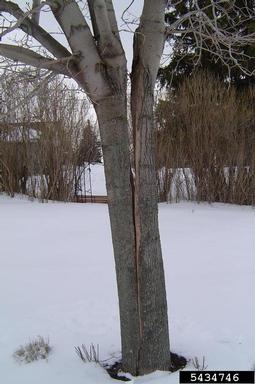
Cracks in the trunk of the tree can pose a big danger to homeowners. Whether the crack was caused by extreme fluctuations in temperature, splitting of weak branch unions, or improperly closed wounds, the crack is a weak point in the tree. This weak point makes it much more likely that the tree will break at that crack during windstorms, heavy snow, and thunderstorms. Cracks can sometimes be hard to spot because they blend in with the bark of the tree.
3. Hanging, Broken, or Damaged Limbs
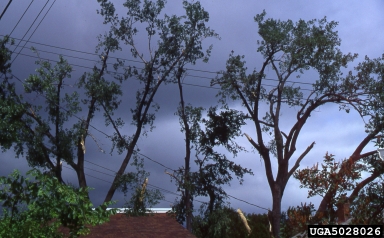

Hanging, broken, and damaged limbs are one of the easier hazards to spot on this list. Most homeowners find these in their trees after storms. These limbs are very dangerous because they could fall at any point hurting people that happen to be in the vicinity and damaging property that is under or near the tree. Look for limbs that are snapped, hanging low/pointing downward, or have lots of leaves that have been ripped off by storms. An arborist can evaluate which limbs pose a risk and prune them out of the tree safely.
4. Dead Limbs
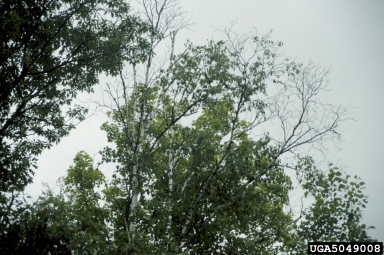
In the spring and summer, it is easier for homeowners to spot dead branches because they will be lacking leaves. These branches are at a higher risk of coming down during a storm and risk hitting people and property below when they fall. A good amount of dead limbs could also be a sign that your tree is suffering from a disease or an insect infestation. If you notice a lot of dead limbs in your tree it’s best to get an Arborist out ASAP to prune the dead limbs and diagnose any issues that could possibly be causing the limbs to die.
5. V-Crotches & Co-Dominant Stems:
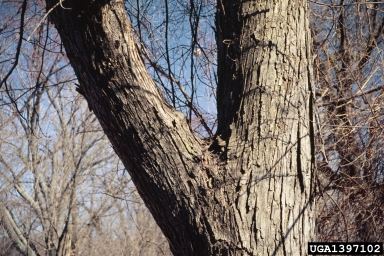
Trees with co-dominant stems, 2 or more main stems that are about the same size and emerge from the same location on the trunk, are more likely to fail than a tree with a single stem. Co-dominant stems that are attached in a “V” shape are the most likely to fail; however, stems that attach in a “U” shape can still fail as well. In the canopy of the tree, large branches attached with tight, v-shaped forks are prone to failure as well and may need to be lightened or removed.
6. Missing Bark
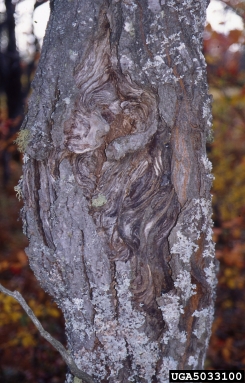

An area that is missing bark, gashed, or indented is called a canker. These cankers can be caused by disease or injury to the tree. A canker can make a tree more likely to break or split in that spot and if it’s caused by a disease, it can make the tree weaker overall as well. Some trees do shed their bark, such as silver maple, birch, or sycamore, this type of shedding is healthy and normal for their species and should not be confused with cankers.
7. Root Rot
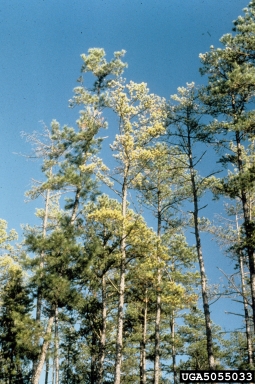
Root rot is the number one cause of trees that uproot in storms. It is a disease that rots away the root system of a tree leaving the tree unable to stay properly rooted in the ground and unable to receive water and nutrients from the roots. High soil moisture and warm soil temperature favor root rot. The condition is common in areas where run-off or rainwater collects around the roots of plants. Overwatering your plants can also lead to the development of root rot.
Although root rot can be hard to spot from above the ground, look for mushrooms growing around the base of your tree, poor tree growth, wilted leaves, early leaf drop, and branch dieback.
8. Tree Cavity
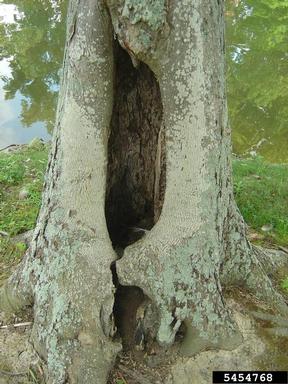
Trees can develop cavities, holes, and hollows in the trunk of the tree, for many reasons including injuries, stress, over mulching and buried root collars. These culprits can lead to vascular collapse within the tree and decay pockets around the lower trunk wood making it more likely for the tree to snap during storms and high winds. Although there is no treatment, cavities should be regularly inspected by an arborist because if the cavity is too large the tree may need to be taken down.
How Can I Prevent These Issues In The First Place?
Unfortunately, even when you take all the proper precautions your tree isn’t guaranteed to survive a storm. Even healthy trees are at risk of uprooting when faced with winds gusts higher than 70 mphs. However, proper maintenance, routine inspections by an arborist, and structural pruning at a young age can all help reduce your tree’s risk of falling during storms.
Proper maintenance including routine pruning, mulching, fertilizing, and preventative disease/insect treatments all go a long way when it comes to keeping your tree healthy and reducing the risk of it falling or being damaged in a storm.
Structural Pruning is the trimming of young trees in their first few years of life to help fix structural issues before they develop into big problems that cause your tree to fall or break in a storm. By structural pruning trees at a young age you can keep co-dominant stems from developing and promote a healthy crown structure.
Tree Cabling is the use of cables to stabilize a tree’s physical structure in cases where the tree can no longer support its own weight. It is typically used for trees that are old and trees that have structural issues, such as co-dominant stems. Cabling a tree can help give your tree extra support to maintain its structural integrity during heavy winds or storms.
If you have any of the warning signs we listed above give us a call and we will have one of our certified arborist come out, evaluate the tree, and help you take care of the problem. To learn more or schedule a consultation give us a call at 703-573-3029 or book an appointment online.


